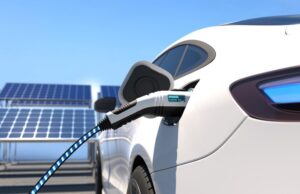Driving an electric car brings new habits. These have advantages and disadvantages which will each have more or less importance depending on the use reserved for the machine.
What are the advantages of the electric car?
On average, traveling 100 kilometers in an electric car costs about 2.20 euros in electricity, compared to 10 euros in fuel with an equivalent diesel model or 12 euros if it is a gasoline vehicle.
With such an equation, the more kilometers you will achieve per year, the more driving an electric car will be financially attractive . A much greater advantage if you produce your own electricity. On the other hand, if you need to recharge at paying terminals open to electromobilians, we could find situations where mathematically it would be more expensive to travel by electric vehicle, with certain charging networks charging dissuasive prices. It’s up to you to avoid them when possible!
The electric car is more reliable
The electric car has a much simpler operation than a thermal car. On an electric vehicle, there are fewer wearing parts to be changed regularly. For example, there is no gearbox. And some parts wear less quickly, especially the brake linings thanks to regenerative braking.
There are fewer moving parts, the electric motor can accumulate hundreds of thousands of kilometers without failing, the battery packs are managed efficiently, the overall reliability of EVs is incomparable compared to thermal models. Hence maintenance savings which are added to those on energy use.
The electric car is silent
For music lovers, the quiet operation of an electric car translates into increased enjoyment of listening to favorite musical tracks. However, this is only a detail compared to the overall comfort of driving, which creates an atmosphere in the cabin that is both more conducive to discussions and more relaxing on arrival. Confusing perhaps at first, but not at all invalidating for driving, since the absence of a conventional gearbox eliminates the auditory attention to be given to the engine speed to change gear.
The impact of electric vehicles on the environment is less
Overall, the impact of electric vehicles on the environment and public health is much better than that of thermal models. However, it depends on the supply chain of raw materials, the manufacture of vehicle components, the electrical source for recharging, the use of the machine, its recycling at the end of its life.
The different players concerned by these different points are working hard to improve, sometimes under pressure from Europe and NGOs. What can be said, however, is that an electric car does not emit chemical pollutants and does not emit CO2 as it passes. There remains the case of fine particles that you will find below in the disadvantages.
There are no traffic restrictions for electric vehicles
There are more and more ZFEs, Low Emission Zones. They will even be compulsory in towns of more than 150,000 inhabitants from 2025. With the key, permanent traffic restrictions for the oldest vehicles, and punctual for the most recent during pollution peaks. But electric vehicles are not affected!
For those who have a means of domestic recharging and mainly use their car for small and medium-sized daily trips, recharging their electric vehicle only takes the time to connect it to the network when arriving at home in the evening and to carry out the reverse operation the next morning. That is a few tens of seconds!
In some households, the time saved can be considerable, since this ritual avoids sometimes significant trips or detours when it is necessary to go to a service station to fill up the fuel tank. The scenario can, in some cases, exceed the hour, if we still include the waiting time at the pump, that of the filling, then that to pay at the cash desk. Some managers now even require you to come here for the first time before using yourself.
The electric vehicle promotes the development of renewable energies and the stability of networks
Because it is necessary to maximize the beneficial effects of converting the rolling stock to electric power, various professional players – including energy companies – and public authorities (Europe, government) are imagining smart grid scenarios and architectures that increase the efficiency of electrical production from intermittent renewable sources.
The EV batteries then become storage units that recover the excess flow, to proceed in reverse when the demand for electricity is greater than the green production. These are the main lines of the principle of V2H (Vehicle to Home), V2B (Vehicle to Building) and V2G (Vehicle to Grid), which apply respectively to the scale of a dwelling, a building, or the national power grid.
The initial purchase price of an electric car is higher
It is precisely because electric passenger cars are more expensive to buy that the French government has set up an environmental bonus (6,000 euros until the end of 2022), which can be accompanied by a conversion bonus. (2,500 euros, or even 5,000 euros for the most modest) by entrusting for destruction an old thermal vehicle (VP or light diesel utility vehicle registered before January 1, 2011, or a gasoline model put into circulation for the first time before January 1, 2006 ).
These aids do not yet fully cover the price difference between a thermal and an equivalent electric. But do not forget the difference in the cost of use, mentioned in the advantages above, or that of maintenance.
With the technological progress made on traction batteries, a new electromobility user is less and less confronted with the limits of a range that does not exceed 150 kilometres. Electric city cars now offer 300 to 400 km of range, family models from 400 to 500 km.
But if it is a question of carrying out regularly long distances, autonomy can still appear today too chick with number of motorists.




